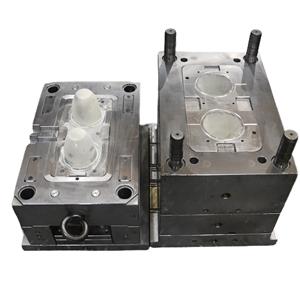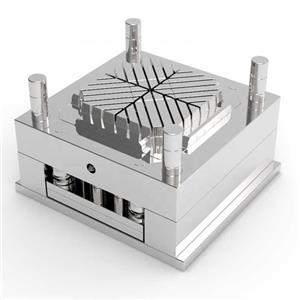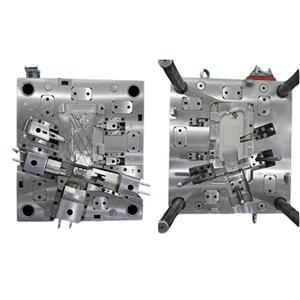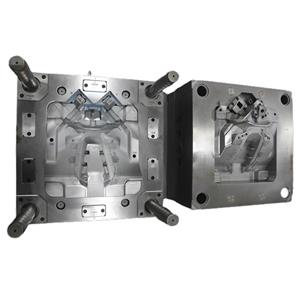Automotive Bumper Design Trends Shaping the Future of Car Aesthetics
The Rise of Integrated Design
Modern bumper design increasingly emphasizes seamless integration with the rest of the vehicle's bodywork. Gone are the days of distinctly separate bumper units; instead, designers strive for a cohesive and fluid look. This is achieved through the use of sophisticated sculpting techniques and carefully chosen materials that blend seamlessly with the hood, fenders, and headlights. The result is a sleeker, more aerodynamic profile, contributing to improved fuel efficiency and a more aesthetically pleasing overall design.
This trend is particularly evident in luxury and high-performance vehicles, where the emphasis on elegance and sophistication is paramount. Manufacturers utilize advanced CAD software and prototyping techniques to achieve a level of precision and refinement that was previously unattainable. The integrated approach minimizes visual interruptions, creating a sense of streamlined elegance and modern sophistication. This seamless integration is not merely about aesthetics; it also improves pedestrian safety by softening the impact points in a collision.
The Embrace of Active Aerodynamics
Aerodynamics play a crucial role in fuel efficiency and vehicle performance. Consequently, bumper design is increasingly incorporating active aerodynamic elements to optimize airflow and reduce drag. These features might include adjustable air vents, spoilers, or diffusers that deploy at different speeds or driving modes, enhancing aerodynamic performance as needed.
This trend is particularly pronounced in sports cars and electric vehicles, where maximizing range and performance is critical. Active aerodynamic elements allow the vehicle to adapt to varying driving conditions, reducing drag at high speeds and improving stability at lower speeds. The implementation of these features requires sophisticated engineering and control systems, often integrated with the vehicle's electronic architecture. These active elements, while enhancing performance, also add to the vehicle's unique design aesthetic, showcasing the car's technological sophistication.
Material Innovation and Sustainability
The materials used in bumper construction are undergoing a significant transformation, driven by both aesthetic and environmental considerations. Traditional materials like steel are being increasingly complemented or replaced by lighter, more durable, and often more sustainable alternatives. These include high-strength plastics, carbon fiber composites, and even bio-based materials.
The use of lighter materials contributes to improved fuel efficiency and reduced emissions, aligning with the industry's growing focus on sustainability. Furthermore, these advanced materials offer greater design flexibility, allowing for more intricate and complex shapes and finishes. For example, carbon fiber can be used to create visually striking, high-performance bumpers with unique textures and finishes that are impossible to achieve with traditional materials. The shift towards sustainable materials also resonates with environmentally conscious consumers, further driving this trend.
Personalized Aesthetics and Customization
The automotive industry is witnessing a growing demand for personalized aesthetics. Car buyers are increasingly seeking vehicles that reflect their individual style and preferences. This trend is also impacting bumper design, with manufacturers offering a wider range of customization options, including different colors, finishes, and even add-on accessories.
This trend is fueled by the increasing popularity of aftermarket customization, with consumers modifying their bumpers to enhance their vehicles' appearance. Manufacturers are responding to this demand by offering factory-installed customization options, allowing customers to tailor their bumpers to match their personal style. This includes offering various finishes, such as matte black, chrome, or even unique color-matched options that perfectly complement the vehicle's paint job. This approach allows for a greater degree of personalization, enhancing the consumer's connection with their vehicle.
The Influence of Lighting Technology
Automotive lighting technology is constantly evolving, and this directly impacts bumper design. The integration of LED and laser lighting technologies is leading to more sophisticated and stylish headlamp and taillight designs, often seamlessly integrated into the bumper itself.
Slim, sleek LED light strips and dynamic lighting features are becoming increasingly common, adding to the car's visual appeal. These technologies allow designers to create unique lighting signatures that contribute to a vehicle's brand identity and overall aesthetic. The integration of these lighting elements within the bumper requires careful consideration of heat dissipation and durability, alongside the aesthetic goals of the design. The result is a more visually striking and technologically advanced vehicle front and rear fascia.
In conclusion, the future of automotive bumper design is dynamic and exciting, shaped by a convergence of technological advancements, environmental concerns, and evolving consumer preferences. The trends discussed above highlight a shift from purely functional components to integrated, aesthetically significant elements that contribute significantly to the overall design language and brand identity of a vehicle. As technology continues to advance and consumer demands evolve, the bumper will undoubtedly remain a key area of innovation in the automotive industry.




